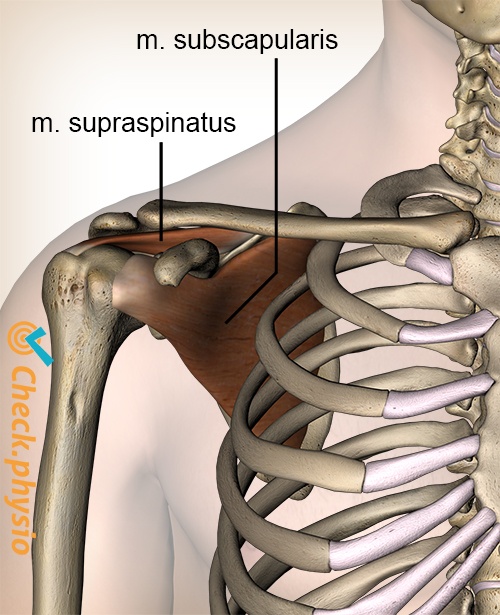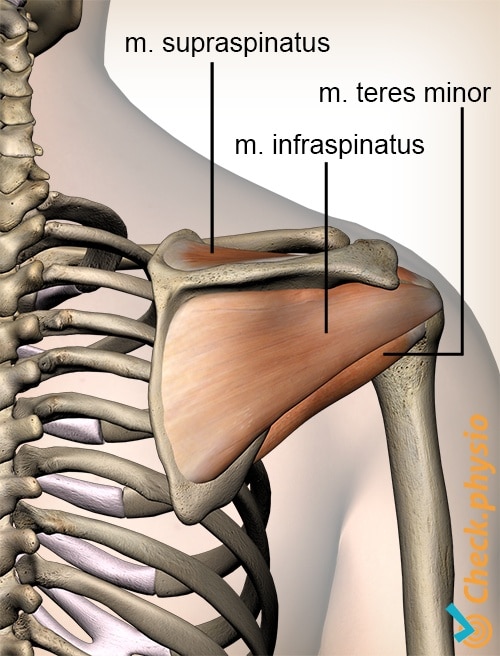Rotator cuff injury
M. supraspinatus, infraspinatus, teres minor and subscapularis
The rotator cuff is a collective term for the four muscles in the shoulder that are mainly responsible for shoulder stability. They are mainly active in the mid-range positions of the shoulder joint. Weakness and degenerative changes of the rotator cuff muscles and tendons will often result in shoulder symptoms.

Rotator cuff injury is more common in elderly people. It is also more common in people who play sports that involve overhand throwing or use of rackets.
Description of the condition
The rotator cuff consists of the supraspinatus muscle, the infraspinatus muscle, the teres minor muscle and the subscapularis muscle. Together, they ensure that the head of the humerus is stabilised in the socket during shoulder movements. If this does not happen, through injury or impaired coordination, this can result in impingement of the head of the humerus below the roof of the shoulder (acromion). This is called impingement.
Cause and origin
Injury to one or more of the rotator cuff muscles can be caused by overloading, degeneration or trauma such as a fall on the shoulder or the arm.
Signs & symptoms
Pain in the shoulder, loss of strength and feeling of instability are common symptoms following a rotator cuff injury. In addition, patients can struggle to lift the arm and work above shoulder height. If tears occur in the cuff muscles, the patient can also experience pain at night when lying on the affected shoulder.
Diagnosis
The diagnosis is usually made by a physiotherapist or general practitioner. During an interview, the complaints are discussed. Together with the physical examination, this will lead to the diagnosis. In addition, it is especially important to examine the cause of the rotator cuff injury.
If necessary, additional testing can be carried out. For rotator cuff injuries, ultrasound examination is the best examination. No muscles can be seen on an X-ray. An MRI is also possible, but an ultrasound examination is faster, cheaper and just as good. An ultrasound examination also allows for the shoulder to be examined during movement. This is not possible with an MRI.
Treatment
Specific exercises to train the rotator cuff can result in muscle recovery. If a torn muscle does not recover, surgical stitching can be considered.
Exercises
Since doing exercises is an important factor in the treatment, the exercise programme with exercises for rotator cuff injury can be followed here.
You can check your symptoms using the online physiotherapy check or make an appointment with a physiotherapy practice in your area.

References
Nugteren, K. van & Winkel, D. (2007). Onderzoek en behandeling van de schouder. Houten: Bohn Stafleu van Loghum.
Verhaar, J.A.N. & Linden, A.J. van der (2005). Orthopedie. Houten: Bohn Stafleu van Loghum.
Winters, J.C., Windt, D.A.W.M. van der, Spinnewijn, W.E.M., Jongh, A.C. de, Heijden, G.J.M.G. van der, Buis, P.A.J., Boeke, A.J.P, Feleus, A. & Geraets, J.J.X.R. (2008). NHG-standaard. Schouderklachten. Tweede herziening. Huisarts Wet. 2008; 51(11):555-65.



